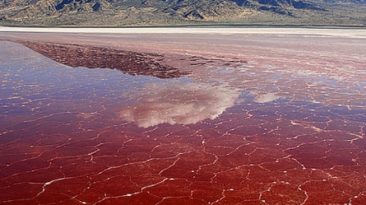What would happen if you poured liquid nitrogen all over your car? Or used it to fight a fire? Or even tried to cool down with it on a hot day?
Liquid nitrogen may look like a lot of fun when you’re watching people dump everyday objects into it, but it’s actually a very dangerous substance. And if someone were to dump you in it, the fun would quickly come to an end.
Did you know that hundreds of people voluntarily jumped into a pool of liquid nitrogen? It’s true! It happened at a promotional pool party in 2013.
By the end of the event, one person was in a coma, and eight others had been rushed to the hospital. So what is it that makes this substance so dangerous?
What would you feel as dove into a pool full of it? And would it actually be strong enough to freeze your entire body?
Before we go jumping into a whole pool of it, let’s get to know liquid nitrogen a little better. Liquid nitrogen, or LN2 as the cool kids call it, is nonflammable, odorless, and colorless; and it creates its notorious fog whenever it’s exposed to room temperature air.
It can be used to freeze and transport food products, to preserve sperm and eggs, and to remove skin abnormalities, among other things. Recently, its use has been embraced by the public, with chefs and bartenders using it to create fancy ice creams and cocktails.
With this new fascination with liquid nitrogen and the fact that’s its available to the public, something terrible was bound to happen. And that brings us back to the LN2 pool party that we mentioned before.
In an effort to create a smoke effect to impress guests, a resort in Mexico poured four large cans of liquid nitrogen into the hotel pool. It created an impressive fog, but it also did something the organizers didn’t know about: it displaced the oxygen poolside. And with no oxygen, guests couldn’t breathe.
Luckily though, since it was just four cans of liquid nitrogen that were added slowly, it boiled off in the water before it made contact with anyone’s skin. So how much worse would it have been if the entire pool was filled with pure liquid nitrogen?
Well, one thing’s for sure. You wouldn’t want to go for a swim in it. You’d be better off just dipping your hand in quickly.
If you were to quickly submerge your hand in liquid nitrogen, it would feel frozen. But there wouldn’t be any frostbite or damage because of something called the Leidenfrost effect.
Because liquid nitrogen boils at the very low temperature of -196 °C (−320 °F), it will bead up and create a layer of vapor underneath it when it touches any surface that’s at room temperature, similar to when you drop water onto a flat heated surface.
So if you dipped your hand inside liquid nitrogen, a vapor barrier would immediately form that protected your hand from freezing. But the protective barrier would only be temporary.
If you were planning on taking a long swim, you wouldn’t be coming back out. Instead, you’d get severe frostbite all over your body.
Then, the cold would work its way deeper inside you. Muscles, fat, your blood, and every other liquid in your body would be frozen solid.
If you kept your head above the surface, your body would freeze underneath you, and you’d sink right down. But on the bright side, there probably wouldn’t be much pain involved since the nerve damage would be so severe and occur so quickly.
As terrible as this would be for a living creature, it could actually be beneficial for a dead one. Instead of being buried or cremated, some people have chosen to have their bodies frozen when they die. It’s called cryogenic freezing.
Subscribe to What-If on Youtube or follow the show on Facebook Watch.
Sources
- “Everything You Need To Know About Liquid Nitrogen”. Helmenstine, Anne Marie, 2019. Thoughtco. Accessed July 17 2019.
- “Slate’S Use Of Your Data”. Waldman, Katy, 2019. Slate Magazine. Accessed July 17 2019.
- “Hand Vs. Liquid Nitrogen And The Leidenfrost Effect”. 2019. Youtube. Accessed July 17 2019.
- “What Is Cryogenics And How Does Freezing Bodies Work?”. Smith, Reiss. 2016. express.co.uk. Accessed July 17 2019.
- “Meet The Company Offering A Chance At Immortality For $200,000”. 2016. CNBC. Accessed July 17 2019.



























